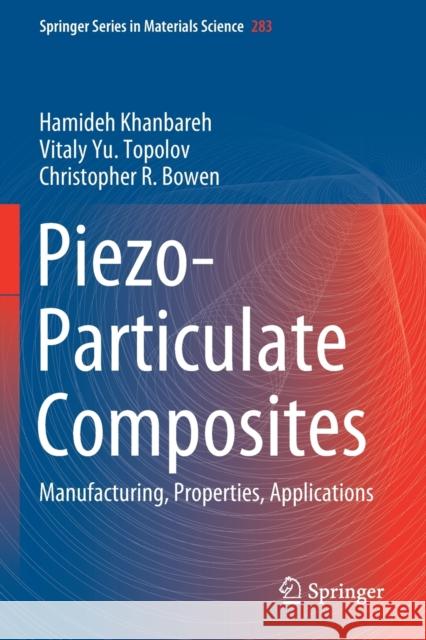Piezo-Particulate Composites: Manufacturing, Properties, Applications » książka



Piezo-Particulate Composites: Manufacturing, Properties, Applications
ISBN-13: 9783030192068 / Angielski / Miękka / 2020 / 160 str.
Piezo-Particulate Composites: Manufacturing, Properties, Applications
ISBN-13: 9783030192068 / Angielski / Miękka / 2020 / 160 str.
(netto: 573,71 VAT: 5%)
Najniższa cena z 30 dni: 578,30
ok. 22 dni roboczych
Dostawa w 2026 r.
Darmowa dostawa!
Preface
1. Piezo-active Composites: Classification and Effective Physical Properties
1.1. Piezo-active Composites as Modern Active Dielectrics
1.2. Criteria of Classifications of Composites
1.3. Microgeometry and Connectivity
1.4. Effective Physical Properties of Piezo-active Composites
1.4.1. Piezoelectric Medium and Its Characteristics1.4.2. Methods for Evaluation of Effective Properties
1.4.3. Electromechanical Coupling Factors and Figures of Merit
1.4.4. Effects of Addition, Combination and Generation of Properties in Composites Based on Ferroelectrics
1.5. Conclusion
1.6. References
2. Aspects of Composite Manufacturing2.1. Methods for Manufacturing
2.2. Role of Ceramic and Polymer Components
2.3. Role of Electric Poling
2.4. Dielectrophoresis, Its Characteristics and Advantages
2.4.1. Effect of Dielectrophoresis Structuring on Electrical Displacement
2.4.2. Effect of Dielectrophoresis Structuring on Electromechanical Strain
2.4.3. Reproducible Composite Patterns and Related Microgeometric Features
2.5. In Situ Structuring and Poling
2.6. Conclusion
2.7. References
3. Experimental Studies on Effective Properties and Related Parameters of Piezo-particulate Composites
3.1. Microgeometry of Piezo-particulate Composites
3.2. Ferroelectric Behaviour and Related Parameters
3.3. Pyroelectric Properties
3.4. Dielectric Properties
3.5. Enhancing Piezoelectric Sensitivity
3.6. Relations Between Piezoelectric Sensitivity and Anisotropy
3.7. Conclusion
3.8. References4. Modelling of the Composite Structure Formation During Dielectrophoresis
4.1. Dielectrophoretic Force
4.2. Viscous Drag
4.3. Examples of Modelling
4.4. Interaction Between Ceramic Particles and Their Influence on the Composite Structure
4.5. Conclusion4.6. References
5. Prediction of Effective Properties of Composites Based on Ferroelectric Ceramics
5.1. 0–3 Connectivity Patterns and Properties of Composites
5.2. 1–3 Connectivity Patterns and Properties of Composites
5.3. Piezoelectric Properties and Their Anisotropy
<5.4. Electromechanical Coupling
5.5. Figures of Merit
5.6. Improving Piezoelectric Sensitivity
5.7. References
6. From Microgeometry to Improved Properties of Piezo-particulate Composites
References
Appendix A. List of Abbreviations
Appendix B. About the AuthorsIndex
Hamideh Khanbareh received her BSc degree, in 2008, in Materials Science and Engineering from University of Tehran. In 2012 she received her Cumlaude MSc degree in Aerospace Engineering from Delft University of Technology, Netherlands. Her final project concerned fractal analysis of microstructures of ultra-high strength aluminium alloys for aerospace applications. She then pursued her PhD in Novel Aerospace Materials group, at Delft University of Technology working on functionally graded ferroelectric composites. During her PhD she also worked as a visiting scientist at the Molecular Electronics Research Group at Max Planck Institute for Polymers (MPIP), in Mainz, Germany. In June 2016 she obtained her PhD degree from Delft University of Technology and subsequently was appointed as a Prize Fellow at the Materials and Structures Research Centre, within the Department of Mechanical Engineering at University of Bath. Dr Khanbareh’s main research interests are in materials design, modelling, fabrication and application of piezo- and pyroelectrics in sensing and energy harvesting. Heterogeneous polymer-ceramic composites, offering a wide range of compositional and microstructural design flexibility, are the target of her current research. Dr Khanbareh has authored 21 peer-reviewed journal papers and 10 conference papers. She has been a member of IOM3 SMART MATERIALS & SYSTEMS COMMITTEE (SMASC), Institute of Electrical and Electronics Engineers (IEEE) Ferroelectrics as well as Royal Society of Chemistry.
Christopher Rhys Bowen earned a BSc in Materials Science at the University of Bath, UK in 1990 and DPhil in ceramics in the Department of Materials, University of Oxford, UK in 1993. In 1993–1994, he worked at the Technical University of Hamburg-Harburg, Germany. From 1994 to 1996, he was at the School of Materials, University of Leeds, UK and from 1996 to 1998, he was a Senior Scientist at DERA, Functional Materials Group, UK. He joined the University of Bath in 1998 and is now a Professor at the same University. The research interests of Prof. C. R. Bowen are cfunctional ceramics, including ferroelectric ceramics and composites for modern sensors and actuators.
This book provides an overview of the current state of the art in novel piezo-composites based on ferroelectrics. Covering aspects ranging from theoretical materials simulation and manufacturing and characterization methods, to the application and performance of these materials, it focuses on the optimization of the material parameters.
Presenting the latest findings on modern composites and highlighting the applications of piezoelectric materials for sensors, transducers and hydro-acoustics, the book addresses an important gap in the physics of active dielectrics and materials science and describes new trends in the research on ferroelectric composites.
1997-2025 DolnySlask.com Agencja Internetowa
KrainaKsiazek.PL - Księgarnia Internetowa









